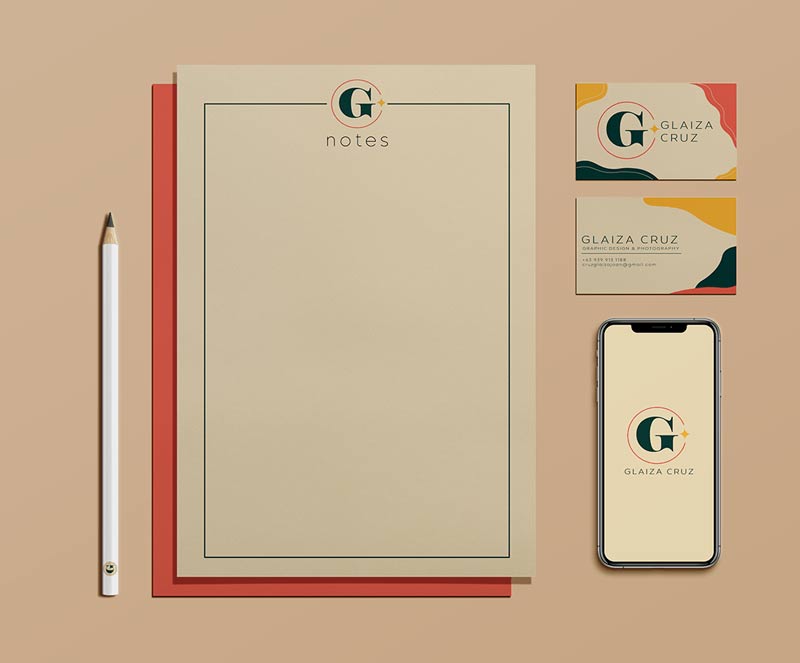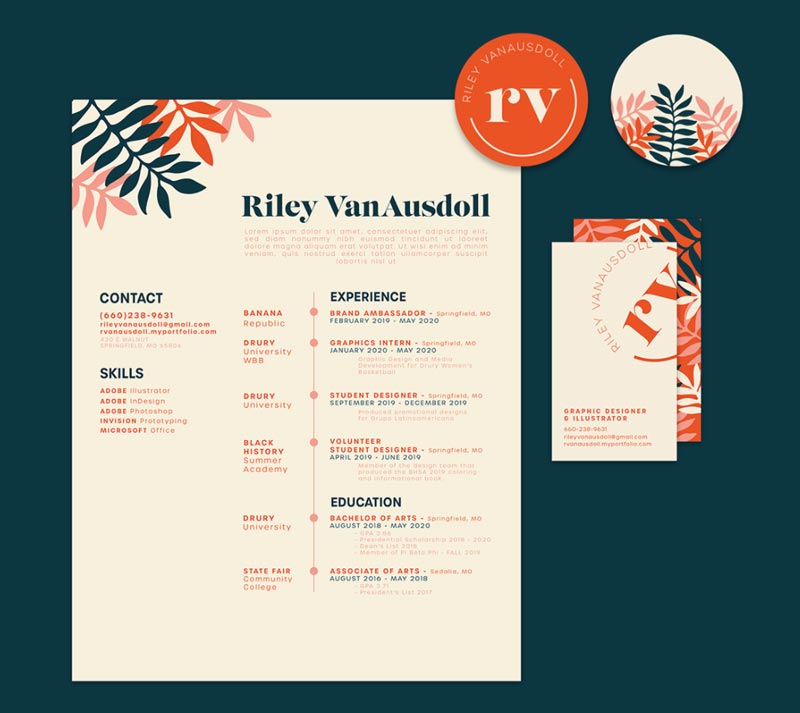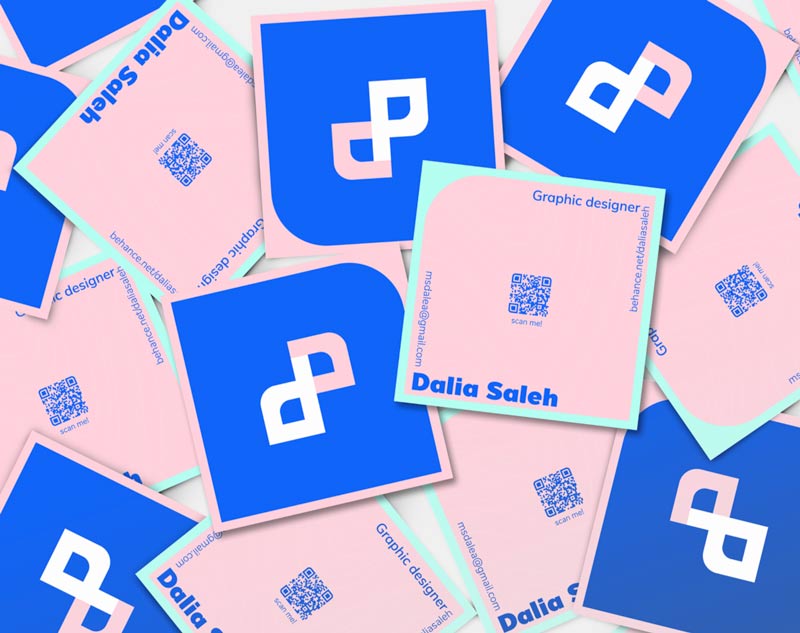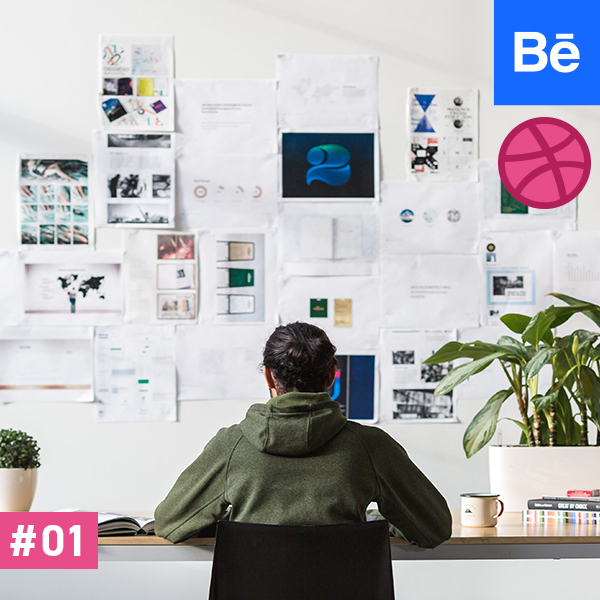Personal branding is all about marketing yourself as an individual and what you want others to say about your personality and creative work.
This post will cover the reasons why Personal Branding is essential and the steps you can take today to develop your brand.
Brand yourself: Why it's so important
Many creatives, whether you are a Graphic Designer, illustrator or Video Editor, may often have amazing skills, but tend to fail to land a job or internship due to poor self-branding.
Your brand, meaning the visual identity you place on your CV, portfolio, business cards, website, social media (and anything you use to promote yourself) is your first impression. It needs to communicate the right message to potential clients, employers, collaborators and social media followers.
Your brand should reflect the type of projects you want to work on, so you attract the right kind of opportunities. Take for example if you love editorial, print and type-based projects with minimalist colour palates, don't go animating brightly coloured illustrations. I'm sure you can guess why that would be a lousy call, as it's likely to attract illustration and animation projects.
If you are feeling a little lost and finding a difficult to develop your identity, here are some questions to ask yourself:
1. What area do you want to specialise in? Do you prefer Logos? Illustrations or Packaging ect
2. Why did you start designing? Maybe you always drew as a kid or recently discovered you are passionate about Logo design?
3. What are your dream projects/clients?
4. Your strength and weakness as a designer?
5. How would you describe yourself in 3 words? If you struggle to answer this, then ask a friend how they would describe you.
Brand Elements to include:
Personal branding doesn't have to be sophisticated as a business branding; here are three elements to consider:
1. At the very core of your brand identity will be your primary Logo (this could also have an abbreviated version for social media, but it's up to you).
2. A colour palette ( ensure you know the hex, RGB and CMYK references, so you know they are always the same. )
3. A secondary typeface which you will use on documents for subtext such as your name, contact details on a business card or CV.
The Brand Guide
This brand yourself guide will provide you with a working method to help you develop the critical elements of your personal brand (Logo, colour palette, secondary typeface) and then give you a kick-start on the best way to use your beautiful new design identity!
Here's some inspiration to get you started. Be sure to check out the entire project!
1. Research is key
As with any creative project, you need to gather some research, find examples you love (and some you don't.) Look at a variety of styles from marque based logos, type-based Logo, Mascot logo etc.
Please pay attention to the colours people have used, how many design elements they produced and how they have applied the brand in a broader context.
2. Sketch Sketch Sketch
The sketching process will add clarity, save time and improves productivity in the branding project. When it comes to creating your Logo, start with 10-20 (or even 30) very rough sketches. The more ideas you have, the easier it will be to choose your favourites! (you can also ask friends/ families or other designers for feedback)
3. Experimentation - The fun bit!
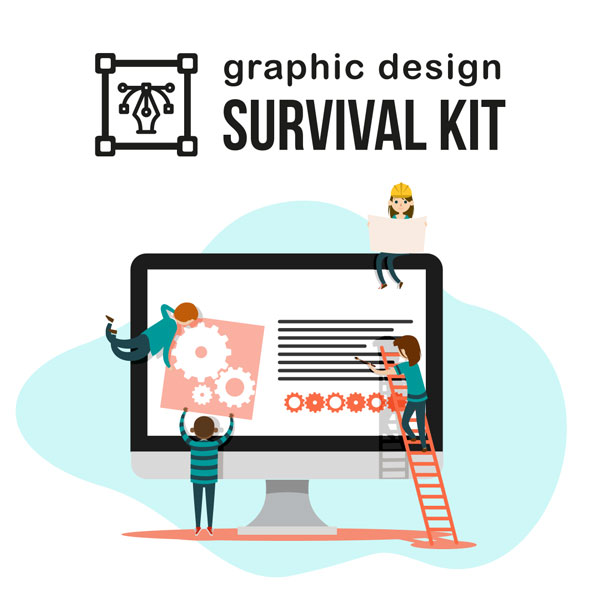
Are you interested in becoming a Graphic Designer or Illustrator?
Join 10,000+ creatives and subscribe to our FREE Graphic Design Survival Kit newsletter.
You’ll get instant access to our resource library and feel well equipped to make that next big leap in your design career.
4. Refinement & Application
So you have a few designs you like, and you've experimented with colour palettes, fonts etc. Now you need to make the hard decision, which elements do you finalise to become your brand. A key rule to follow is to go with your instinct; after all, you are the designer and should have a good idea on what you like (and don't)
At this point, you should have: A logo, a colour palette and a secondary typeface to be used on business cards CV's, portfolio and websites.
5. Then we're straight back to the fun bit!
Start applying your Logo to business card designs, your CV, and professional Social Media profiles, Portfolios, Behance, Dribbble, etc. Make sure you stick to the colour palette and use your branded Typefaces.
Please note for websites such as Behance or Dribbble, and it may be hard to customise font so try to match it to your brand typeface as closely as possible
I hope you enjoyed reading this guide, and are excited to improve your brand identity. Check out the tutorials below to help you build a consistent portfolio!
UP NEXT
Learn about the leading design portfolio platforms in the creative industry. Get some tips on how you should be using them to better your creative career!
LEARN ADOBE APPLICATIONS
from Adobe Certified Instructors and industry professionals



